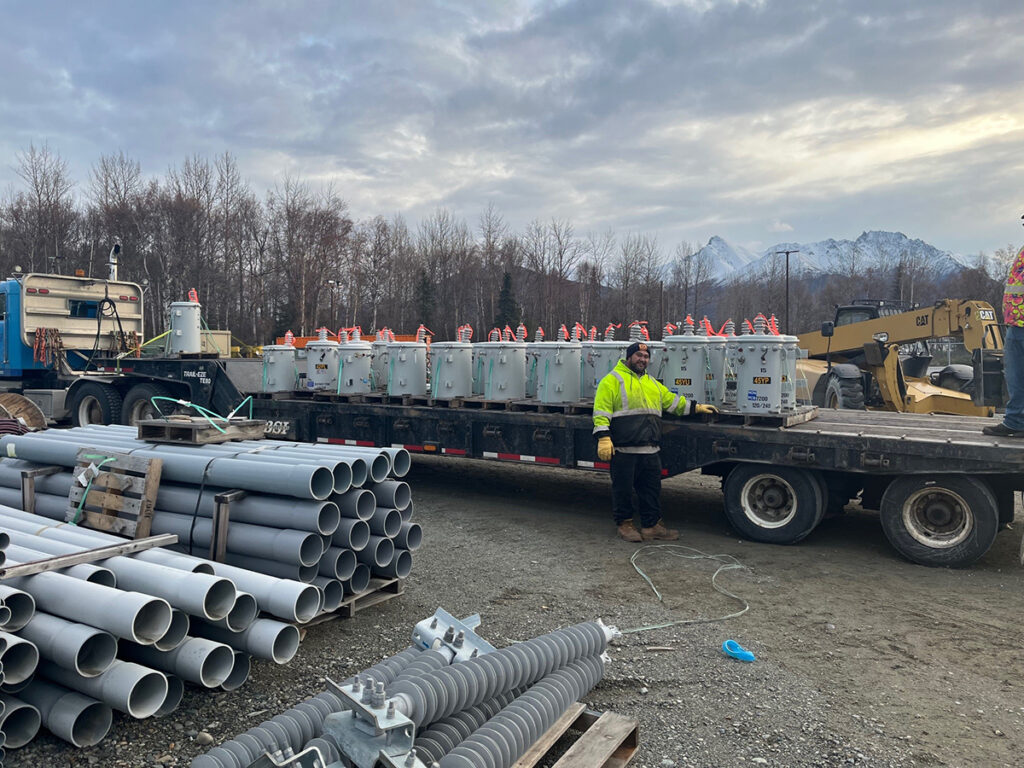
When the remnants of Typhoon Halong hit the tiny indigenous village of Kipnuk in western Alaska last month, military helicopters swooped in to rescue residents from the raging floodwaters that knocked homes from their foundations and destroyed 90% of the town’s buildings.
Now, as state officials begin to rebuild the village’s essential infrastructure, 70 transformers from Matanuska Electric Association in Palmer, Alaska, will help restore power to the devastated community.
“When the request came in for 70 transformers, I approved it immediately,” said Matanuska CEO Tony Izzo, whose co-op is about 750 miles by plane from Kipnuk and does not serve the remote village near the Bering Sea.
“Alaska is such a unique place. It’s remote and the climate can be severe, so we reach out and help each other, whether somebody is broken down on the side of the road or needs some other type of aid. We have to band together and be self-sufficient.”
The Alaska Department of Transportation and Public Facilities reached out to the Alaska Power Association, which sent them to MEA. State officials said they were thrilled when the co-op offered to provide all 70 of the hard-to-find transformers, which were sent to Kipnuk aboard C-130 military transport planes.
The state will reimburse the not-for-profit co-op for the cost of the transformers, Izzo said.
“What made this situation unique is that Kipnuk had pole-mounted transformers, which are not something Lowes, Home Depot or even commercial electrical warehouses keep in stock,” the state transportation agency said on LinkedIn in late October. “It was not possible to pursue normal purchasing through Alaska suppliers.”
Izzo said it was easy to say yes to the request for help since the generation, transmission and distribution co-op had a couple of thousand transformers on hand. He has been ordering and stockpiling transformers whenever possible since the shortages caused by the COVID-19 pandemic made them hard to get.
MEA serves about 58,000 consumer-members—or 73,000 meters—and is the fastest-growing co-op in Alaska, averaging about 1,300 new meters per year. A couple of delayed orders for transformers finally came in this year, giving the co-op enough to meet demand for about two-and-a-half years, Izzo said.
He said the co-op was glad to be able to share its equipment with Kipnuk, whose residents are anxious to return to their lives of fishing and hunting along the Kugkaktlik River.
In addition to rebuilding the electric grid, state officials are replacing the wooden boardwalks that allow villagers to use all-terrain vehicles to travel over the permafrost.
“We have to help each other because nobody else is going to come and save us,” Izzo said. “We’re proud of what we do in a challenging environment.”
Erin Kelly is a staff writer for NRECA.